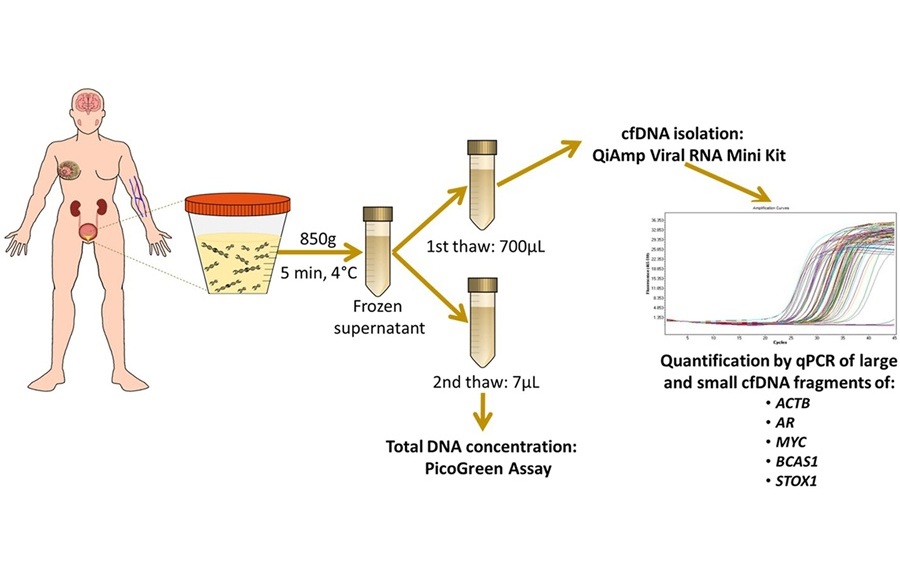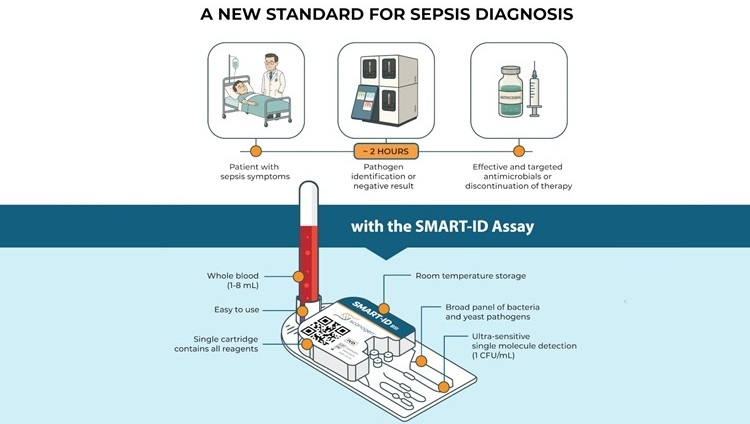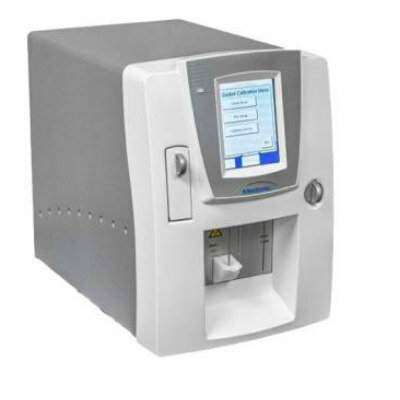Microfluidic Device Rapidly Diagnoses Sepsis
|
By LabMedica International staff writers Posted on 15 Aug 2019 |

Image: An MIT-invented microfluidics device could help doctors diagnose sepsis, a leading cause of death in US hospitals, by automatically detecting elevated levels of a sepsis biomarker in about 25 minutes, using less than a fingerprick of blood (Photo courtesy of Felice Frankel).
Sepsis is a life-threatening condition and early diagnosis is crucial to ensure that treatment is not delayed. However, as current diagnostic methods are imprecise, the condition is misdiagnosed in 30% of patients.
It is estimated that, each year, sepsis affects over 30 million people around the world. Sepsis may also lead to around six million deaths each year. To prevent sepsis from evolving into septic shock, a complication that makes premature death more likely, doctors have to diagnose it early and act on it quickly. Yet current diagnostic methods are often symptomatic, combined with tests checking for general markers of infection or organ damage.
Bioengineers and their colleagues at Massachusetts Institute of Technology (Cambridge, MA, USA) have developed a microfluidics-based system that automatically detects clinically significant levels of interleukin-6 (IL-6) for sepsis diagnosis in about 25 minutes, using less than a finger prick of blood. In one microfluidic channel, microbeads laced with antibodies mix with a blood sample to capture the IL-6 biomarker. In another channel, only beads containing the biomarker attach to an electrode. Running voltage through the electrode produces an electrical signal for each biomarker-laced bead, which is then converted into the biomarker concentration level.
The device uses about 5 µL of blood, which is about a quarter the volume of blood drawn from a fingerprick and a fraction of the 100 µL required to detect protein biomarkers in laboratory-based assays. The device captures IL-6 concentrations as low as 16 pg/mL, which is below the concentrations that signal sepsis, meaning the device is sensitive enough to provide clinically relevant detection. This suggests that the device is very sensitive to the presence of key biomarkers. More importantly, the scientists argue that the innovative tool is highly adaptable and could be set to detect other sepsis biomarkers, such as interleukin-8, C-reactive protein, and procalcitonin, among others.
Dan Wu, a PhD student in the Department of Mechanical Engineering, and first author of the study said, “For an acute disease, such as sepsis, which progresses very rapidly and can be life-threatening, it’s helpful to have a system that rapidly measures these non-abundant biomarkers. You can also frequently monitor the disease as it progresses.” The study was presented at the Engineering in Medicine and Biology Conference held July 23-27, 2019, in Berlin, Germany.
Related Links:
Massachusetts Institute of Technology
It is estimated that, each year, sepsis affects over 30 million people around the world. Sepsis may also lead to around six million deaths each year. To prevent sepsis from evolving into septic shock, a complication that makes premature death more likely, doctors have to diagnose it early and act on it quickly. Yet current diagnostic methods are often symptomatic, combined with tests checking for general markers of infection or organ damage.
Bioengineers and their colleagues at Massachusetts Institute of Technology (Cambridge, MA, USA) have developed a microfluidics-based system that automatically detects clinically significant levels of interleukin-6 (IL-6) for sepsis diagnosis in about 25 minutes, using less than a finger prick of blood. In one microfluidic channel, microbeads laced with antibodies mix with a blood sample to capture the IL-6 biomarker. In another channel, only beads containing the biomarker attach to an electrode. Running voltage through the electrode produces an electrical signal for each biomarker-laced bead, which is then converted into the biomarker concentration level.
The device uses about 5 µL of blood, which is about a quarter the volume of blood drawn from a fingerprick and a fraction of the 100 µL required to detect protein biomarkers in laboratory-based assays. The device captures IL-6 concentrations as low as 16 pg/mL, which is below the concentrations that signal sepsis, meaning the device is sensitive enough to provide clinically relevant detection. This suggests that the device is very sensitive to the presence of key biomarkers. More importantly, the scientists argue that the innovative tool is highly adaptable and could be set to detect other sepsis biomarkers, such as interleukin-8, C-reactive protein, and procalcitonin, among others.
Dan Wu, a PhD student in the Department of Mechanical Engineering, and first author of the study said, “For an acute disease, such as sepsis, which progresses very rapidly and can be life-threatening, it’s helpful to have a system that rapidly measures these non-abundant biomarkers. You can also frequently monitor the disease as it progresses.” The study was presented at the Engineering in Medicine and Biology Conference held July 23-27, 2019, in Berlin, Germany.
Related Links:
Massachusetts Institute of Technology
Latest Technology News
- Artificial Intelligence Model Could Accelerate Rare Disease Diagnosis
- AI Saliva Sensor Enables Early Detection of Head and Neck Cancer
- AI-Powered Biosensor Technology to Enable Breath Test for Lung Cancer Detection
- AI Model Achieves Breakthrough Accuracy in Ovarian Cancer Detection
- Portable Biosensor Diagnoses Psychiatric Disorders Using Saliva Samples
- Cell-Sorting Device Uses Electromagnetic Levitation to Precisely Direct Cell Movement

- Embedded GPU Platform Enables Rapid Blood Profiling for POC Diagnostics
- Viral Biosensor Test Simultaneously Detects Hepatitis and HIV
- Acoustofluidic Device to Transform Point-Of-Care sEV-Based Diagnostics
- AI Algorithm Assesses Progressive Decline in Kidney Function
Channels
Clinical Chemistry
view channel
Chemical Imaging Probe Could Track and Treat Prostate Cancer
Prostate cancer remains a leading cause of illness and death among men, with many patients eventually developing resistance to standard hormone-blocking therapies. These drugs often lose effectiveness... Read more
Mismatch Between Two Common Kidney Function Tests Indicates Serious Health Problems
Creatinine has long been the standard for measuring kidney filtration, while cystatin C — a protein produced by all human cells — has been recommended as a complementary marker because it is influenced... Read moreMolecular Diagnostics
view channel
Simple Urine Test to Revolutionize Bladder Cancer Diagnosis and Treatment
Bladder cancer is one of the most common and deadly urological cancers and is marked by a high rate of recurrence. Diagnosis and follow-up still rely heavily on invasive cystoscopy or urine cytology, which... Read more
Blood Test to Enable Earlier and Simpler Detection of Liver Fibrosis
Persistent liver damage caused by alcohol misuse or viral infections can trigger liver fibrosis, a condition in which healthy tissue is gradually replaced by collagen fibers. Even after successful treatment... Read moreHematology
view channel
Platelet Activity Blood Test in Middle Age Could Identify Early Alzheimer’s Risk
Early detection of Alzheimer’s disease remains one of the biggest unmet needs in neurology, particularly because the biological changes underlying the disorder begin decades before memory symptoms appear.... Read more
Microvesicles Measurement Could Detect Vascular Injury in Sickle Cell Disease Patients
Assessing disease severity in sickle cell disease (SCD) remains challenging, especially when trying to predict hemolysis, vascular injury, and risk of complications such as vaso-occlusive crises.... Read more
ADLM’s New Coagulation Testing Guidance to Improve Care for Patients on Blood Thinners
Direct oral anticoagulants (DOACs) are one of the most common types of blood thinners. Patients take them to prevent a host of complications that could arise from blood clotting, including stroke, deep... Read moreImmunology
view channel
New Test Distinguishes Vaccine-Induced False Positives from Active HIV Infection
Since HIV was identified in 1983, more than 91 million people have contracted the virus, and over 44 million have died from related causes. Today, nearly 40 million individuals worldwide live with HIV-1,... Read more
Gene Signature Test Predicts Response to Key Breast Cancer Treatment
DK4/6 inhibitors paired with hormone therapy have become a cornerstone treatment for advanced HR+/HER2– breast cancer, slowing tumor growth by blocking key proteins that drive cell division.... Read more
Chip Captures Cancer Cells from Blood to Help Select Right Breast Cancer Treatment
Ductal carcinoma in situ (DCIS) accounts for about a quarter of all breast cancer cases and generally carries a good prognosis. This non-invasive form of the disease may or may not become life-threatening.... Read moreMicrobiology
view channel
Rapid Diagnostic Test Matches Gold Standard for Sepsis Detection
Sepsis kills 11 million people worldwide every year and generates massive healthcare costs. In the USA and Europe alone, sepsis accounts for USD 100 billion in annual hospitalization expenses.... Read moreRapid POC Tuberculosis Test Provides Results Within 15 Minutes
Tuberculosis remains one of the world’s deadliest infectious diseases, and reducing new cases depends on identifying individuals with latent infection before it progresses. Current diagnostic tools often... Read more
Rapid Assay Identifies Bloodstream Infection Pathogens Directly from Patient Samples
Bloodstream infections in sepsis progress quickly and demand rapid, precise diagnosis. Current blood-culture methods often take one to five days to identify the pathogen, leaving clinicians to treat blindly... Read morePathology
view channel
Tunable Cell-Sorting Device Holds Potential for Multiple Biomedical Applications
Isolating rare cancer cells from blood is essential for diagnosing metastasis and guiding treatment decisions, but remains technically challenging. Many existing techniques struggle to balance accuracy,... Read moreAI Tool Outperforms Doctors in Spotting Blood Cell Abnormalities
Diagnosing blood disorders depends on recognizing subtle abnormalities in cell size, shape, and structure, yet this process is slow, subjective, and requires years of expert training. Even specialists... Read moreIndustry
view channel
Abbott Acquires Cancer-Screening Company Exact Sciences
Abbott (Abbott Park, IL, USA) has entered into a definitive agreement to acquire Exact Sciences (Madison, WI, USA), enabling it to enter and lead in fast-growing cancer diagnostics segments.... Read more





















